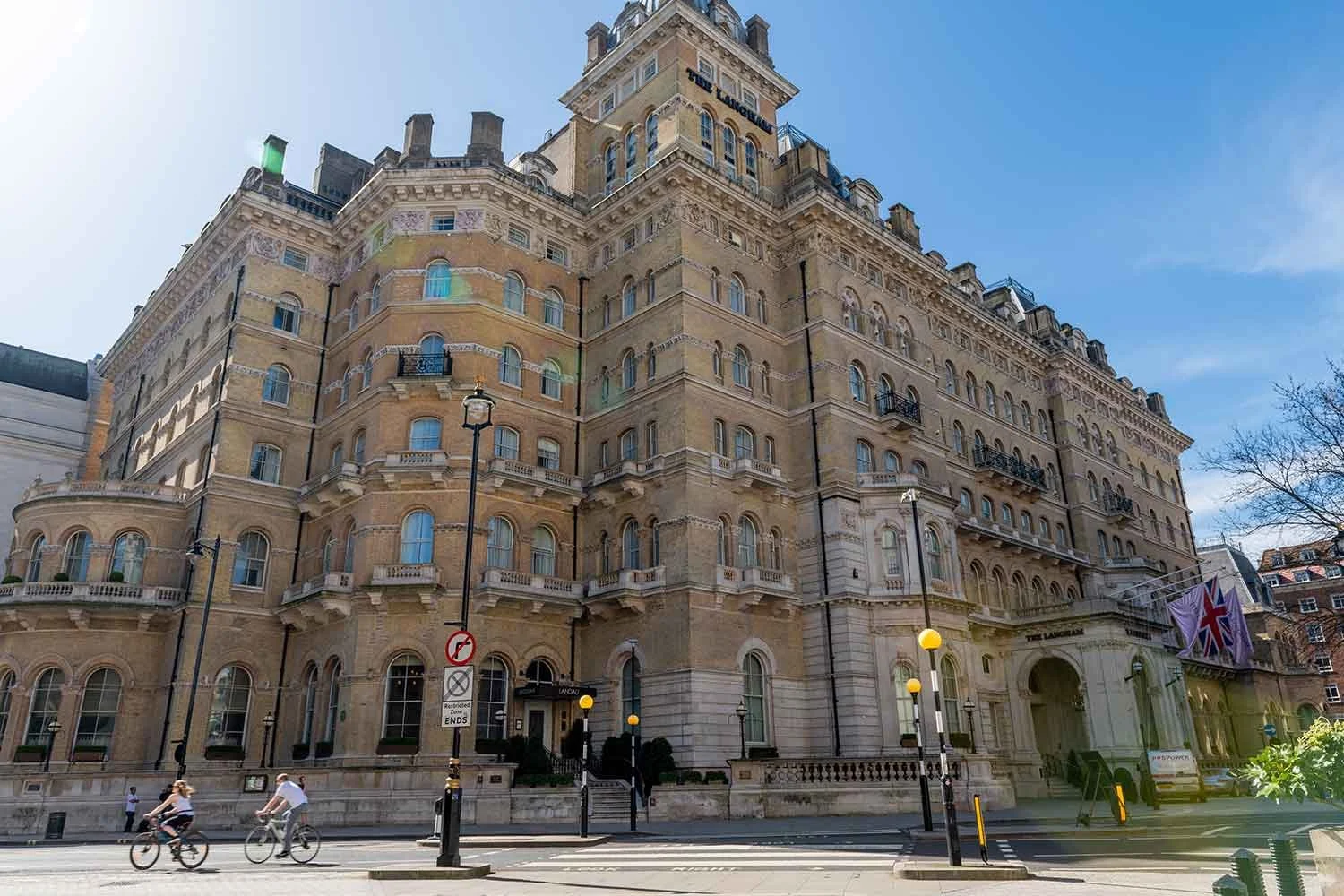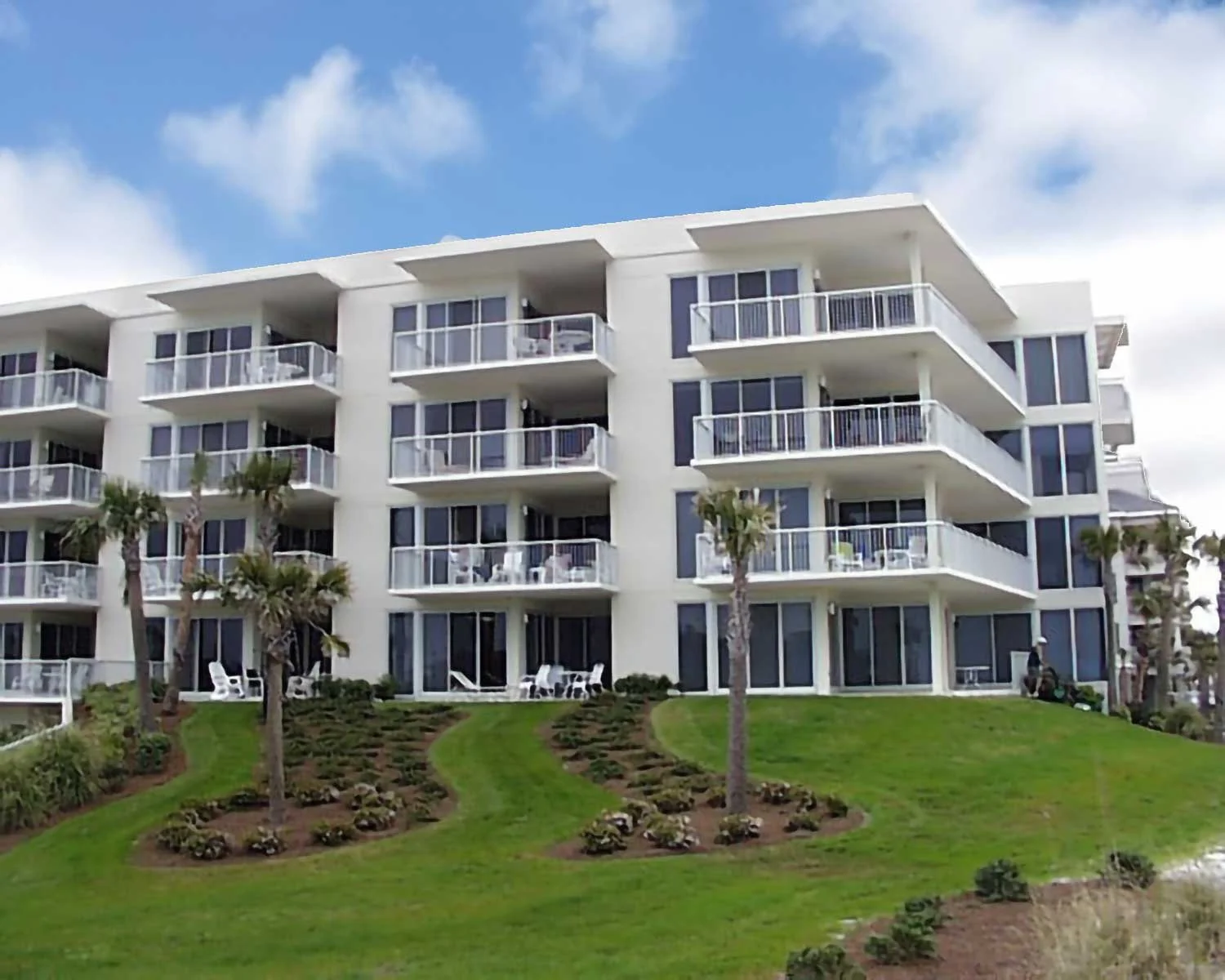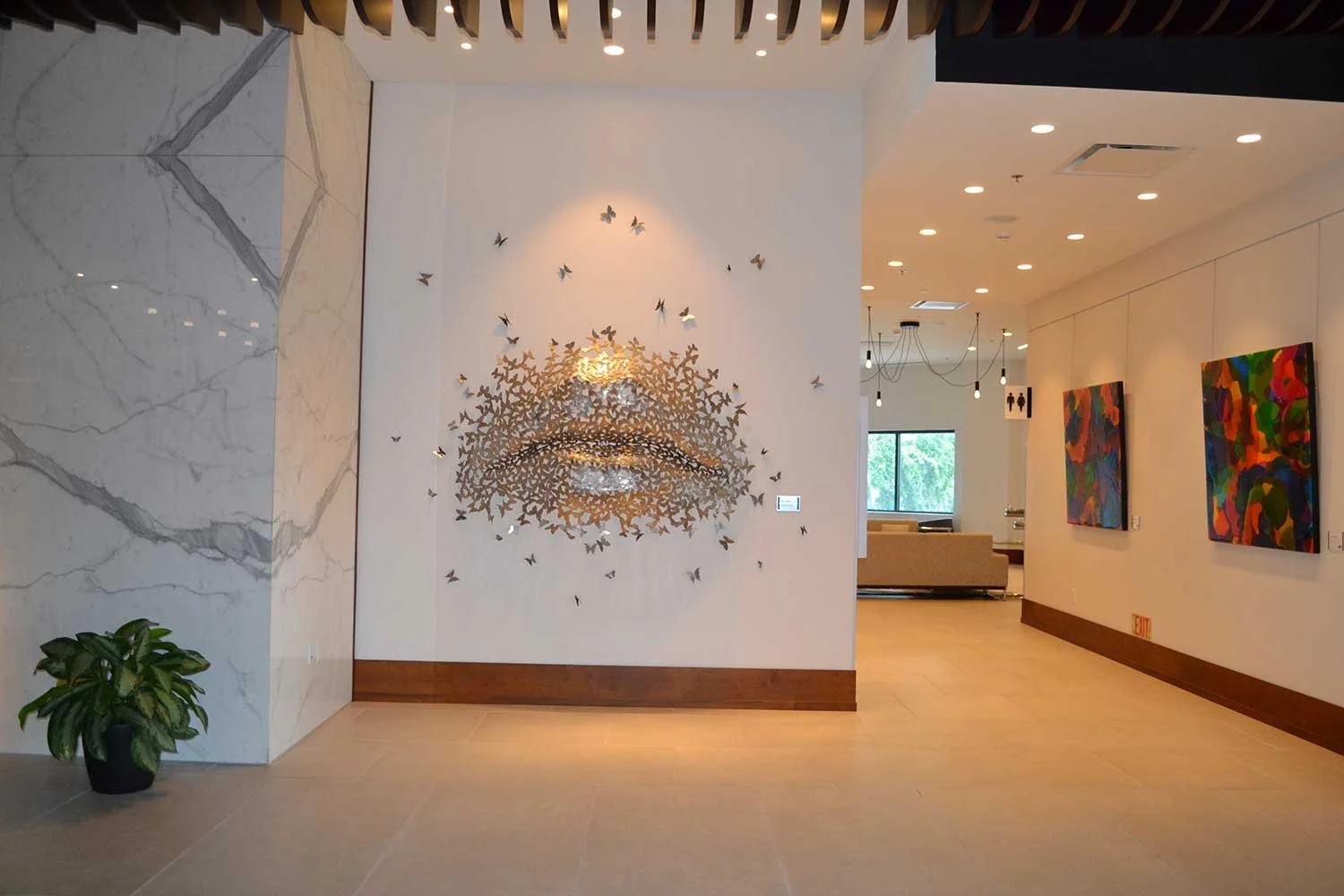THE EVOLUTION OF HOTELS:
KEY FACTORS THAT HAVE INFLUENCED HOTEL DESIGN FROM ITS ORIGINS TO TODAY
At L2 Studios, we’re passionate about hospitality design and how the shifting paradigms of people’s wants and needs through time have impacted hotel design. The future of hospitality lies in understanding its past. By exploring the history of hotels, we uncover the timeless principles that have always defined great hospitality—principles that guide us as we design for the travelers of tomorrow.
Join us on this journey through time, and let’s discover how the lessons of history can inspire innovative, forward-thinking designs that not only meet today’s needs but anticipate the desires of the future.
Pre-1000 CE - The Roots of Hospitality
TAVERNS & INNS
Options for respite were limited for traveling merchants and traders in 100 BCE—perhaps a roadside stall or a farmer’s barn—but the bustling trade routes of the era sparked a solution. Taverns once focused on wine and simple fare, added modest rooms giving rise to the earliest inns scattered across Greek, Roman, and Biblical landscapes.
Trade routes gave rise to earliest inns. Photo Credit: Alamy
Architecturally, they were simple—single-story structures built from whatever was local—wood, mud, stone—with a central hearth that doubled as heat and kitchen, a lockable door, and access to facilities like an outhouse or stable for horses. This was hospitality stripped to its bones: shelter, safety, sustenance. No frills, just function.
Romans built mansions to provide accommodation for travelers on government business. Monasteries and abbeys offered refuge to travelers regularly. Religious orders also built inns, hospices, and hospitals to cater to those on the move.
1000-1700 The First Evolution
URBAN MULTI-STORY INNS
Fast-forward to the Middle Ages and Renaissance—cities were buzzing, trade was booming, and inns improved. In France and England, at the beginning of the fifteenth century, law required hotels to keep a register. The first guidebooks for travelers were published in France during this period. Ryokan guest houses sprang up in Japan, and in India, government-run Dak bungalows provided reliable accommodation for travelers.
Built in the 1540’s, The George Inn, still stands today in London, with its timber-framed galleries around a courtyard. These multi-story setups, often with porches and communal dining halls, popped up across Europe—600 registered in England alone by the 17th century.
Photo Credit: The George Inn, London. c. 1540
In Paris, Louis XIV’s Place Vendôme (late 1600s) mixed grand inns with shops and offices, hinting at today’s mixed-use developments. Stacking rooms vertically maximized cramped urban space, while courtyards and taverns turned lodging into a social hub. Travelers—merchants, pilgrims, even early tourists—wanted connection alongside rest. It’s a peek into human behavior: we have always craved community, even on the road.
1800s - The Industrial Boom
GRAND HOTELS & STATUS SYMBOLS
The Industrial Revolution flipped the script. Railroads and steamships made travel faster and fancier, welcoming the grand hotel era. The Langham, London opened in 1865 and was then the largest and most modern hotel in London, featuring water closets, bathrooms, and the first hydraulic lifts in England. Holiday resorts began to flourish along the French and Italian Rivieras.
The Langham Hotel, London. Photo Credit: Shutterstock
New York’s Waldorf Hotel (1893) later the Waldorf-Astoria, designed by architect Henry Hardenbergh, screamed Gilded Age excess with its gilded ceilings and 1,000 rooms reflecting a cultural milestone of wealth and mobility.
The Waldorf-Astoria, New York, c. 1902. Photo Credit: Shorpy
For guests, this was about status. Design became a billboard for luxury, with plush upholstery and gas-lit lobbies catering to a growing middle class hungry for refinement.
1950s - Car Culture
THE MOTEL CHAIN REVOLUTION
The Motel Revolution: Holiday Inn and Car Culture (1950s)
Cue the 20th century: cars hit the scene, and America’s interstate system demanded a new kind of stopover. In 1951, Kemmons Wilson took his wife and 5 little children to Washington D.C. for a family vacation. They stayed in a $6-a-night motel room, which was not only dingy and cramped, but its price zoomed to $16-a-night as soon as the motel owner saw the kids. Wilson told his wife it wasn’t fair, and within a year, he opened his own motel in Memphis and named it Holiday Inn. The landmark neon-lit sign promised consistency—clean beds, a pool, and a diner. The motel chain was a design game-changer—low-rise, L-shaped layouts with exterior corridors for quick car-to-room access.
This shift reflects human behavior post-WWII—families hitting the highways, craving predictability over pomp. It’s the birth of modern amenities we take for granted: private rooms, TVs, air conditioning. Standardization was a win, though some argue it dulled the charm of quirky, one-off inns.
1970s - Affordable & Flexible
THE TIMESHARE MODEL
The Timeshare Model: Affordability & Flexibility (1970s)
Vacation clubs and timeshares gained popularity in the 1970s due to their affordability and flexibility compared to traditional vacation home ownership. Originating in Europe in the 1960s, the concept allowed multiple owners to share a property, each using it for a specific period annually. In the U.S., the 1970s saw a boom as rising real estate costs and economic challenges made whole ownership less feasible.
The introduction of exchange programs was pivotal, enabling owners to swap their timeshare weeks for stays at different resorts worldwide, enhancing flexibility and appeal. By the 1990s, major hotel chains entered the market, legitimizing the model. Notable brands include Marriott (Marriott Vacation Club, launched 1984), Hilton (Hilton Grand Vacations, started 1992), Disney (Disney Vacation Club, launched 1991), and Hyatt (Hyatt Residence Club, formerly Hyatt Vacation Ownership).
Timeshare - Destin, Florida
Often built in prime vacation destinations, timeshares typically adopted a condominium model, with self-contained units resembling apartments or villas. Each unit included a kitchen, living area, one or more bedrooms, and bathrooms to cater to families, offering a home-like experience. Units were often standardized to simplify construction and maintenance across resorts. Resorts were built with repetitive, modular floor plans to optimize costs and allow for phased expansion as demand grew. This approach enabled developers to add units or amenities without disrupting existing operations. The architecture prioritized shared spaces to create a sense of community and luxury. Central lobbies, dining areas, pools, spas, and sports facilities were designed to attract buyers by offering amenities not typically found in private vacation homes.
1980s - Amenity-Rich Luxury
FULL-SERVICE HOTELS
In the 1980s, hotels went big—literally. Hotels expanded in scale and ambition, with brands like Hilton, Marriott, and Hyatt building high-rise towers that became iconic landmarks. Dubai’s Burj Al Arab (1999), designed by Tom Wright, took it to the next level with its sail-shaped silhouette and gold-leaf interiors—a $1,000 cocktail kind of place. These properties moved beyond basic lodging to offer comprehensive experiences, incorporating restaurants, spas, and grand ballrooms to cater to business travelers, tourists, and event planners. The era’s Economic boom fueled this trend, as hotels competed to attract affluent guests with opulent amenities and larger-than-life designs.
By the late 1980s, hotel design shifted away from the utilitarian, monotonous functionality of the 1960s and 1970s, characterized by bland colors and cookie-cutter layouts. Instead, designers embraced bold, rich color palettes and luxurious materials, reflecting a growing emphasis on creating memorable, visually striking environments.
The rise of global tourism and increased business travel pushed hotels to incorporate cutting-edge technology, such as in-room entertainment systems and advanced conference facilities, to meet the needs of a mobile, professional clientele. The evolution of hotel design in the 1980s set the stage for the hyper-luxury and niche-focused trends of the following decade.
1990s - Early 2000s - Curated Experiences
LIFESTYLE HOTELS
In the 1990s and early 2000s, hotel design transformed due to shifting traveler preferences, the internet’s rise, and a focus on personalized experiences. Boutique hotels like Starwood’s W Hotels (launched 1998) targeted “lifestyle” travelers, offering intimate, curated experiences with local art and cuisine, contrasting with uniform chain hotels. This trend spurred hotel brands to develop specialized properties catering to niche markets. Major brand launches included Ascend by Choice (2008), Autograph by Marriott (2010), Curio by Hilton (2014), Best Western Premier (2014), Unbound by Hyatt (2016), and Trademark by Wyndham (2017).
Art Gallery at the Current Hotel Autograph Collection
Widespread adoption of the Internet by the late 1990s and early 2000s revolutionized travel by enabling direct bookings, bypassing travel agencies, and empowering consumers with information. This accessibility also fueled budget-friendly options like bed and breakfasts, hostels, and tourist apartments, democratizing travel and challenging hotels to stand out. Post-9/11 economic shifts pushed hotels to balance innovation with cost-efficiency, cementing a trend toward guest-centric, experiential design.
Mid 2000s - The Disruption
HOME SHARING
Then came the 21st-century curveball: Airbnb. In October 2007, two unemployed Art School grads lived in a three-room apartment in San Francisco. Needing to make rent, they decided on a lark to rent out some air mattresses during a big design conference that came to town and overcrowded the city’s hotels. They created a simple website called AirBed & Breakfast promoting the rental of three airbeds in the apartment for eight dollars apiece with a series of amenities, such as a design library, motivational posters, and a 3D printer. This moment would mark the start of Airbnb.
Suddenly, you could bunk in a stranger’s loft or a treehouse instead of a hotel. This wasn’t about new buildings—hosts repurposed homes, from Paris flats to Colorado cabins, offering a “live like a local” vibe. Design was eclectic, driven by individuals, not architects—think mismatched furniture or minimalist chic, depending on the host.
For millennials and solo travelers, this tapped a craving for authenticity over polish. It’s a lesson in human behavior: we’ll trade consistency for character. We feel inspired to book that quirky rental, though the flip side—sketchy cleanliness, regulatory battles—shows how unpolished freedom can backfire. Context matters: Wi-Fi and privacy, once luxuries, are now non-negotiable, echoing centuries of amenity evolution.
2020s - The Bleisure Era
SERVICED APARTMENTS
Since 2020, hotel design has been reshaped by post-COVID traveler needs, economic pressures, and cultural shifts. Marriott is an early adopter in the serviced apartment boom, introducing its Apartments by Marriott Bonvoy brand (launched 2022), with hybrid accommodations that blend hotel services like housekeeping with apartment-style features such as full kitchens and living rooms. Serviced apartments target remote workers and families, prioritizing high-speed Wi-Fi and co-working spaces while phasing out traditional, resource-intensive food and beverage operations.
L2 Studios is the AOR and Interior Designer for Apartments by Marriott Bonvoy San Juan.
Soaring real estate costs over the past two decades have driven developers toward mixed-use developments, combining hotels with condos, offices, and attractions like casinos to optimize financing and space efficiency. Lobbies have evolved into vibrant social hubs, guestrooms now feature chic, residential aesthetics, and hotel restaurants and bars integrate into local scenes with art installations and unique designs to create distinctive, memorable atmospheres.
Sustainability is a growing priority, with hotels adopting herb gardens, on-site beehives, Energy-Star appliances, solar panels, and LEED-certified construction to appeal to eco-conscious travelers.
These changes reflect the post-pandemic blurring of work and leisure, a cultural milestone shaping modern travel preferences and hotel design.
The Future
WHAT’S NEXT?
Peering ahead, hotels might morph into wellness hubs (think Westin with medical suites), remote work havens (soundproof pods), or eco-warriors (solar-powered 1 Hotels). AI could tweak your room’s vibe on arrival, while mixed-use towers further blend lodging with life. Architecture and design will keep chasing our needs—sustainability, tech, connection—proving hospitality’s knack for reinvention.
A Lens of Living
CONCLUSION
The history of hotels is a testament to humanity’s adaptability, from the rudimentary taverns of antiquity to the sophisticated serviced apartments of today. Architecture and design have evolved in tandem with traveler needs—security and rest in ancient times, predictability in the motel era, luxury in the 20th century, and flexibility now. As we move forward, the industry stands at an exciting crossroads, poised to integrate wellness, technology, and sustainability into its next chapter. For designers and hoteliers, the challenge will be balancing innovation with the timeless essence of hospitality: making guests feel at home, wherever they are.











